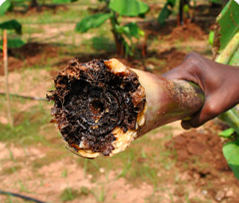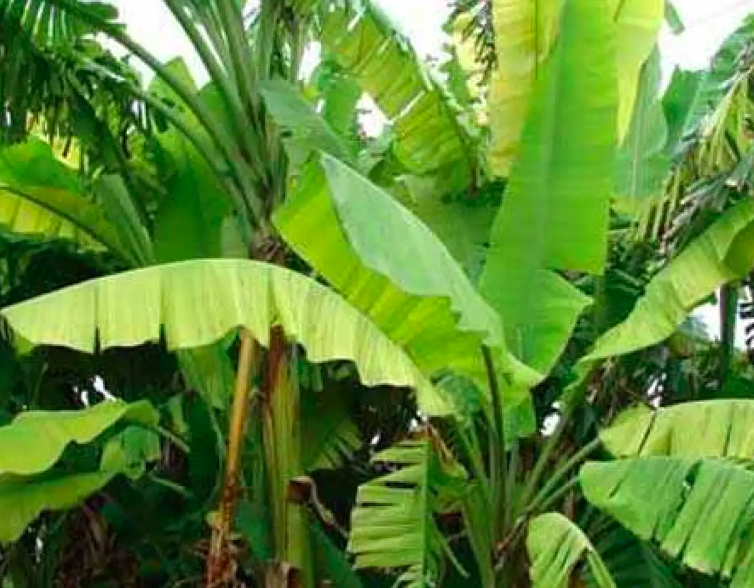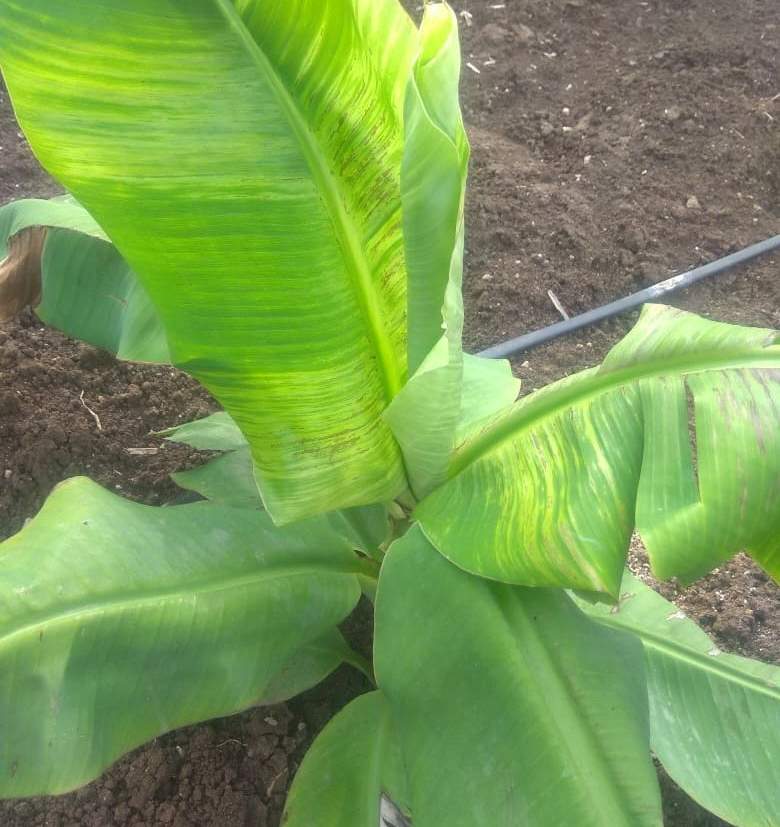Mr Nilesh Deshmukhji, Nanded, Maharashtra, India, tried his hand at planting banana in his small ancestral plot, and used suckers from a friendly neighbours’ farm. He dutifully followed the conventional fertigation and irrigation schedule and was expecting a good return from the banana sales. Sadly, the young banana plants started dying and emitting foul odours. The leaves started drying out all of a sudden, and the crown of the plants was rotting away.
Mr Nileshji made frantic calls to all his farmer friends, who helped him reach our technical team, they advised him to send samples from his field for testing along with videos and soon diagnosed the plantation to be suffering from the dreaded Erwina Rot. “This disease mostly effects young suckers, so It is extremely important to use disease free suckers, or better yet tissue culture hardened plants, because they are already free from pathogens and viruses, and grown under sanitary conditions in a greenhouse” says our director.
Erwinia rot is a bacterial infection caused by Erwinia carotovora or P carotovora and commonly affects several species of plants entering through wounds/pruning tears, spread by insects or rotting vegetation and high humidity conditions.
Ideal Management For Banana Farms Affected By Ervina Rot
It is absolutely necessary to plant disease free suckers, which should be dipped in Copper Oxychloride (40 grams in 10 Litres water)+ Streptocyclin (3 grams in 10 Litres) for 30 min before planting. Our tissue culture hardened plants are a preferred alternative because they are already free from pathogens and do not require this pre-treatment.
In infected plantations, remove infected banana plants immediately. Always remove plant residues after harvest.
To Erwinia affected plants, apply Streptocyclin 1 gram in 10 liters water by drenching the growing tips, as well as blue copper along with a Bactericide (1 gram per litre in water).
Another alternative is to use Bleaching powder (4 kgs in 200 lit water), applied as 300- 350 ml per plant by spraying/drenching.
Erwinia bacterium are commonly found in soil and are usually symbiotic when found in small concentration. However high humidity and poor drainage and lack of soil conditioning can give the disease a chance to infect suckers. Hence farmers keep “On field capacity” ( known as Vapsa condition) which is neither too dry nor too wet.
“To Erwinia affected plants, apply Streptocyclin 1 gram in 10 liters water by drenching the growing tips, as well as blue copper along with a Bactericide (1 gram per litre in water).”




